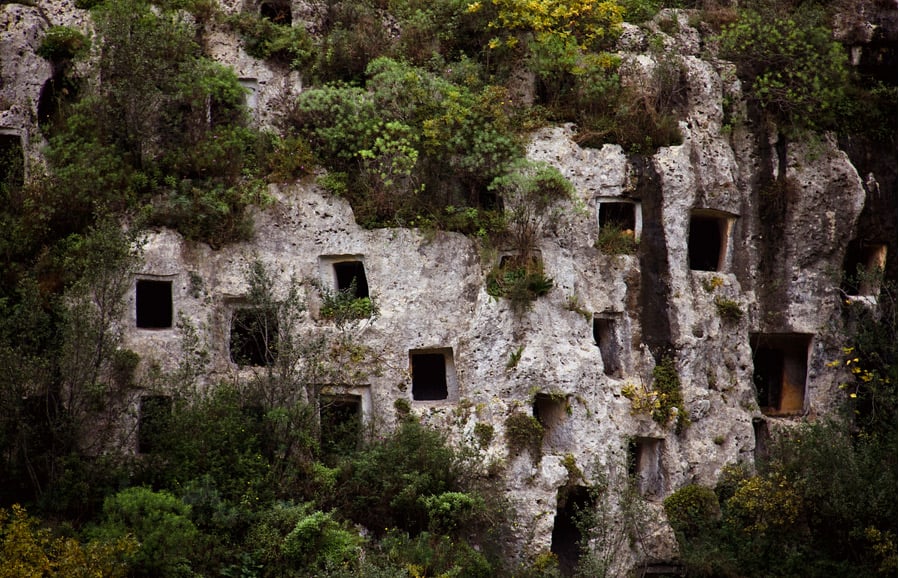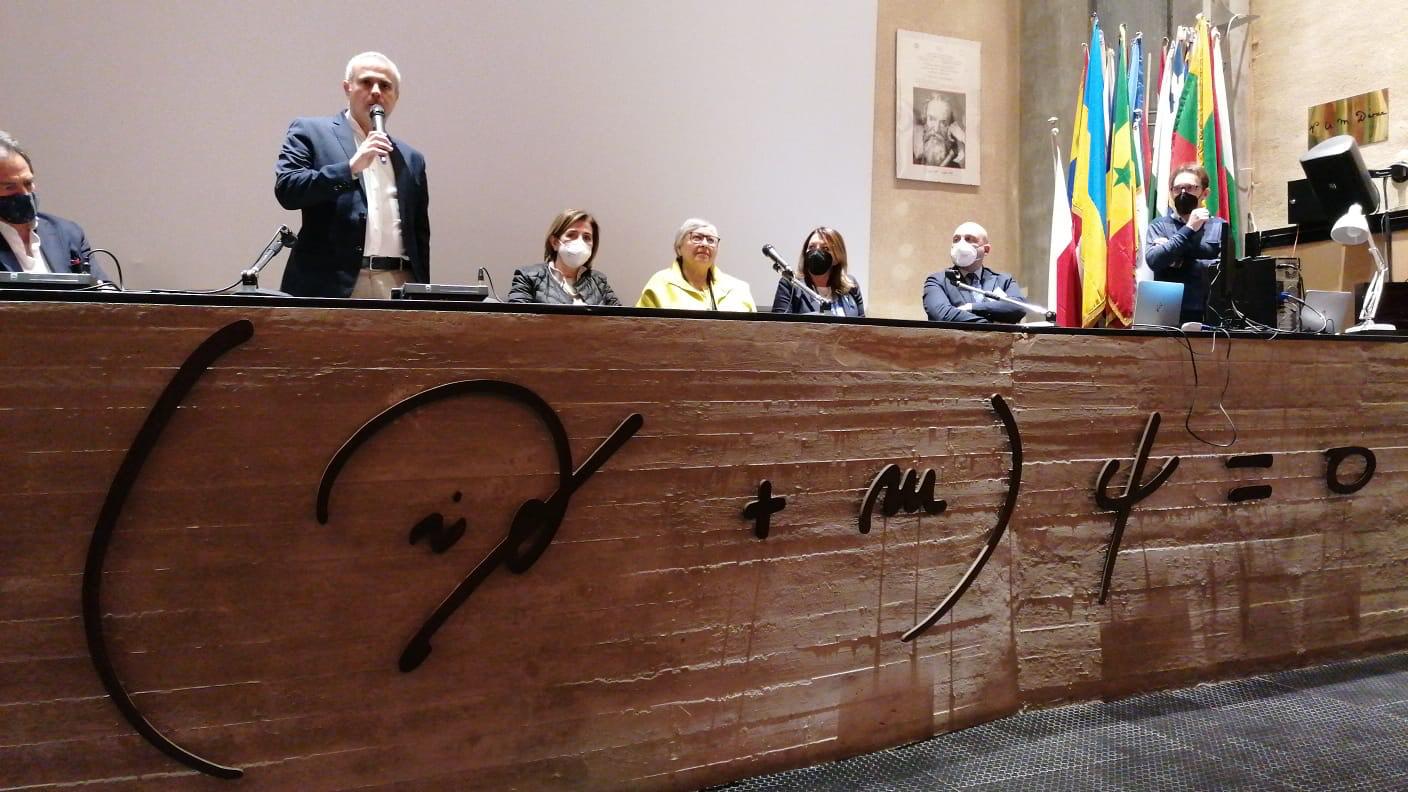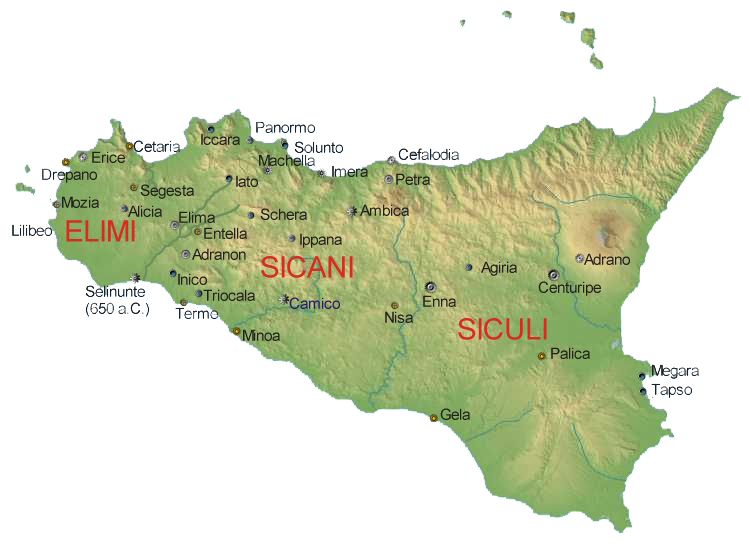
Sicani Elimi Siculi in Sicilia Origini e Lingua YouTube
The Sicani, Elimi and the Siculi were the first powers to influence Sicilian soil, followed by the Phoenicians, the Carthaginians and the Greeks. Sicily was colonized by the Greeks in the 8 th century BC with the most important colony established at Syracuse. Greek domination ended in 212BC with the siege at Syracuse in which Archimedes died.

LA STORIA E LA LINGUA DEI SICULI
Gli Elimi (in greco antico:. Sicani; Siculi; Altri progetti. contiene immagini o altri file su ; Collegamenti esterni. elimi, in Dizionario di storia, Istituto dell'Enciclopedia Italiana, 2010. Èlimi, su sapere.it, De Agostini. (EN) Elymi, su Enciclopedia Britannica, Encyclopædia Britannica.

ACHAMAN GUAÑOC PantalicaLas espectaculares tumbas panel de sicilia
"Siculi", "Sicani", "Elimi", were just some of the first inhabitants. A rich land with a mild climate, Sicily has always been ready to open its doors to everyone: the Greeks started moving to Sicily from the 8th century B.C. , looking for vergin lands to cultivate. Rome conquered Sicily in 241 B.C. and agriculture was improved in.

Sicani, Siculi, Elimi Forme di identità, modi di contatto e processi
Flussi migratori, da cui nasceranno tre gruppi di popolazioni: gli elimi, i siculi e i sicani. In particolar modo, gli elimi approdarono in Sicilia nei secoli intorno al 1000 a. C. inserendosi in un contesto dominato da siti arroccati e naturalmente fortificati, soprattutto nelle zone interne, la cui sopravvivenza era legata allo sfruttamento.

I popoli autoctoni di Sicilia e l'arrivo degli stranieri (Tra Storia e
The Sicani or Sicanians were one of three ancient peoples of Sicily present at the time of Phoenician and Greek colonization. The Sicani dwelt east of the Elymians and west of the Sicels , having, according to Diodorus Siculus , [1] the boundary with the last in the ancient Himera river ( Salso ) after a series of battles between these tribes.
Storia e cultura della Sicilia Nobile e barocca Poggioreale ovvero Elima
The Siculi (Sikeli or Sicels) were a group of Italics who, during the Iron Age, gave their name to the island of Sicily. They were located on the eastern side of the island, in the interior, neighboured to the west by the Sicani , while surrounding them along the coastline were the many colonies of Graecia Magna, including the most powerful of them, Syracuse .

Cartina Puglia Torre Guaceto (Brindisi) Itálie 2020 specialista
In molti, tra studenti e semplici curiosi, si domandano chi erano i primi abitanti della Sicilia che le varie fonti storiche suddividono in tre grandi gruppi: i Sicani, i Siculi e gli Elimi.. Le origini di questi popoli dell'era della Sicilia Preellenica sono molto incerte.. In ballo, tra fonti classiche e studi moderni, ci sono diverse teorie sulla provenienza di queste popolazioni che.

Copia di Le civiltà italiche by Denise Cardilli
Origins. According to Hellanicus of Lesbos, the Elymians were a population of Italic origin, who arrived in Sicily after having fought a war with the Oenotrians. [1] Furthermore for the Greek historian, the Elymians would also have contributed to the formation of the Sicels. [2] Today this thesis seems to be the most accredited and is confirmed.

Sicani Siculi Siculamente
La nascita dei Sicani dovette precedere di poco l'arrivo da Calabria, Campania e Puglia di tribù di popoli italici abili nel lavorare il bronzo e allevare i cavalli. Dopo aver attraversato su zattere lo stretto di Messina, i nuovi arrivati si unirono agli indigeni come il lievito sulla farina. E la storia sfornò un altro popolo simile eppure.
%24.jpg)
La necropoli di Pantalica e la valle dell'Anapo Prima di Pantalica, le
See also Sicani. Siculi, ancient Sicilian tribe that occupied the eastern part of Sicily. Old tales related that the Siculi once lived in central Italy but were driven out and finally crossed to Sicily, leaving remnants behind—e.g., at Locri. They are hard to identify archaeologically, although some words of their.

“Elimi, Siculi e Sicani non nomi che tiriamo fuori da cassetti
La Sicilia, prima dell'arrivo della colonizzazione ellenica, non fu abitata da diverse popolazioni come Sicani, Elimi e Siculi: ma dai greci chiamati antichi popoli di Sicilia . Queste furono le popolazioni preelleniche della Sicilia che i Greci trovarono quando arrivarono sull'isola nel 1234 a.C. .

Caltabellotta Presentazione di due libri del prof. Enrico Caltagirone
Sicani, siculi, elimi forme di identità, modi di contatto e processi di trasformazione by Rosa Maria Albanese Procelli. 0 Ratings 2 Want to read; 0 Currently reading; 0 Have read; Sicani, siculi, elimi. Edit. This edition doesn't have a description yet. Can you add one? Publish Date. 2003. Publisher. Longanesi.

SICANI
Legend has it that the Siculi met the Sicani and defeated them in a large pitched battle. LANGUAGE. Evidence of the Siculi language comes is the fifth or sixth century b. c.e. Possibly a drinking song, the incomplete inscription in the Greek alphabet from a wine vessel, as well as small fragments preserved as glosses by ancient writers show an.

Sicani Siculi Siculamente
Lo studio si propone di dare una identità alle popolazioni protostoriche, Sicani, Siculi ed Elimi, che i Greci trovarono in Sicilia al momento della fondazione dei loro primi insediamenti. Punto di partenza è l'analisi diacronica di tutte le fonti storiche, segue un esame accurato delle narrazioni mitologiche.

ITALIA OMNIUM TERRARUM PARENS La civiltà degli Enotri, Choni, Ausoni
Sicani, according to ancient Greek writers, the aboriginal inhabitants of central Sicily, as distinguished from the Siculi of eastern Sicily and the Elymi of western Sicily. Archaeologically there is no substantial difference between Sicani and Siculi (Sicels) in historical times; but the Greek historian Thucydides believed the Sicani to be Iberians from Spain who were driven by the invading.

Reporter 5 by ELVIRA USSIA Issuu
Siculi, Sicani and Elimi, and all these compared to the Greeks who arrived a few generations later (starting from the XNUMXth century BC, the period of the second colonization) they present well-differentiated anthropological, linguistic and cultural elements, but always in a very relative and therefore small form, always remaining in the Indo-European context.